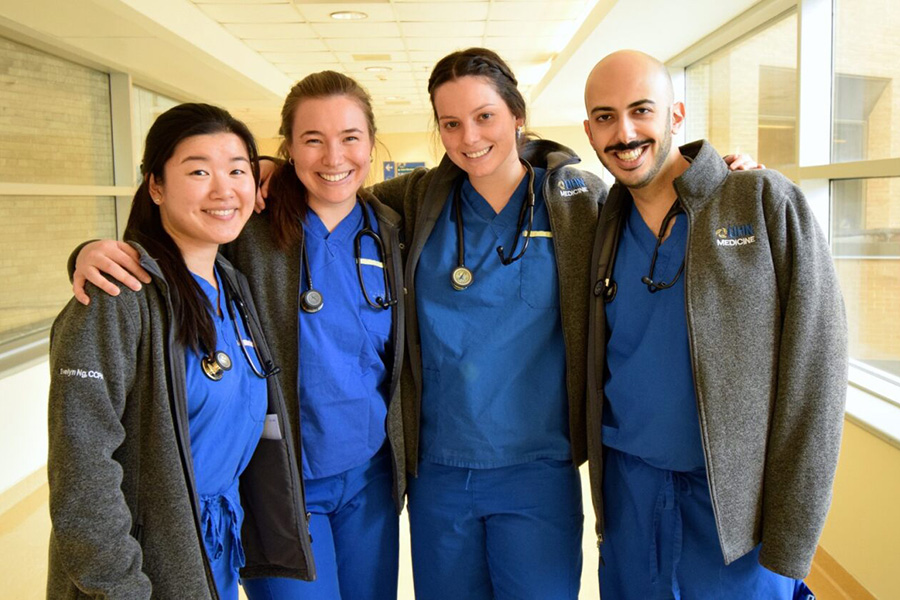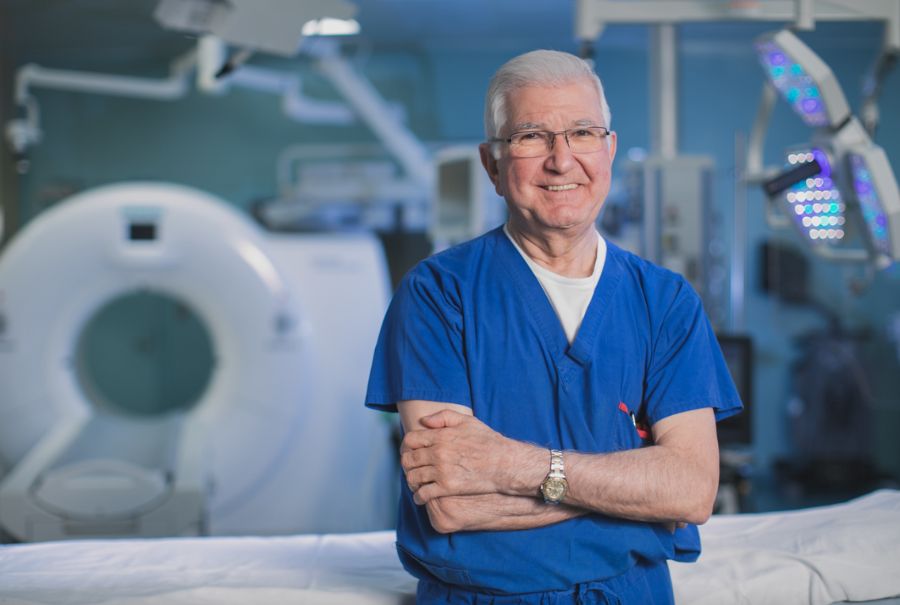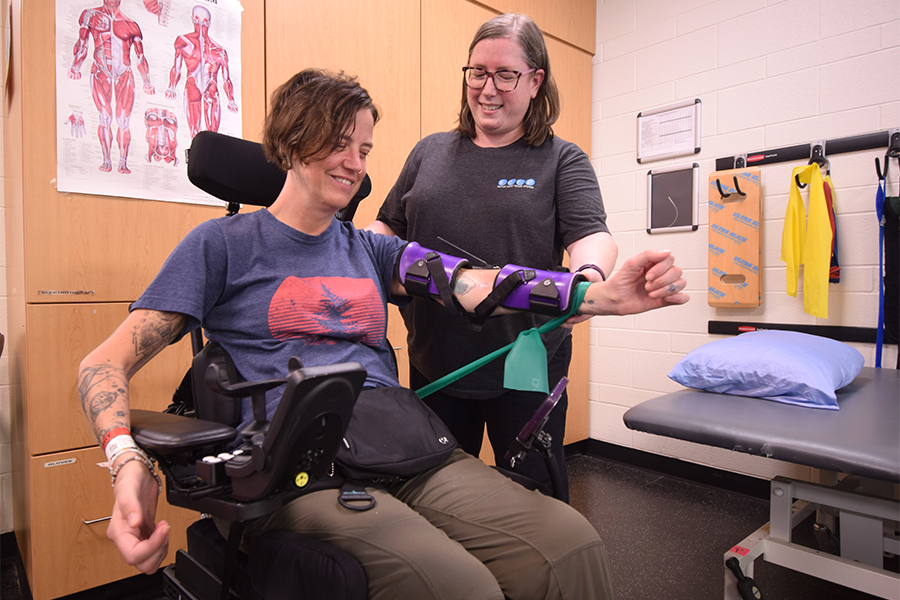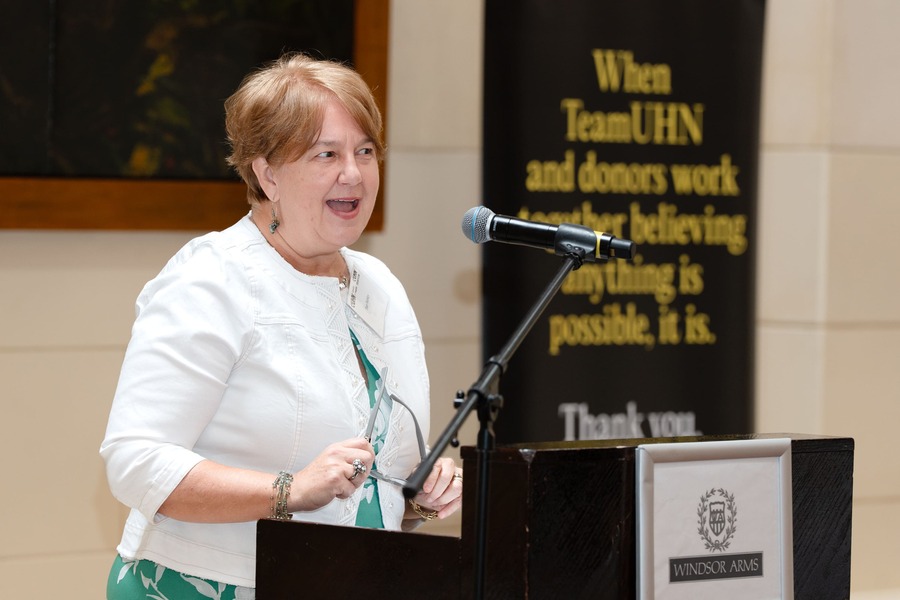
Raymond Khanano and Ashley Barton were already good friends when they were hired as physician assistants (PAs) at Toronto General Hospital (TGH).
Together, after graduating from McMaster University’s Physician Assistant Educational Program in 2021, they became the first PAs hired in General Internal Medicine (GIM) at UHN.
Now, they’re part of a team of four PAs who are helping redefine patient care. They are doing this through the creation of new GIM teams to help care for the growing number of patients requiring admission at TGH.
“I think the reason that we have integrated so well into a setting like GIM is because there’s a very team-based philosophy of practice,” says Raymond.
“We’re always given a seat at the table to provide valuable feedback, and we’ve always been seen as people who can drive change within the division.”
Working with their supervising physicians and team members, Ashley and Raymond have helped create a greater number of clinical teams within GIM – notably the Acute Internal Medicine (AIM) teams – allowing patients to receive high-quality care and easing the workload of the primary physician.
“Because we’re able to stay on one team for several weeks, it helps the patient to receive more one-on-one time, allowing for us to dig deeper into their medical results and charts, and really finding answers to help better their individual health,” says Ashley.
“We can provide that longitudinal care that can be difficult to attain due to frequent staffing changeover in a medical service like internal medicine.”
PAs are medically trained clinicians who work under the guidance and supervision of physicians to improve patient care. They conduct physical examinations, order and interpret laboratory and diagnostic tests, diagnose and treat illnesses, and assist in surgical and bedside procedures.
‘Indispensable contributions’
On Monday, Nov. 27, UHN celebrates National Physician Assistants Day, which aims to recognize the important work that they do to provide quality care to patients.
PAs – who are also more commonly known as physician extenders – broaden the scope of the physician, providing the same quality of care to patients.
PAs work in a variety of divisions across UHN, including General Surgery, Transplant, and the Emergency Department, helping to reduce the workload of doctors and wait times for patients. They work within a diverse medical team to treat patients, which involves medical students, nurse practitioners, residents and staff doctors.
However, medical students and residents require time away from clinical service to meet the educational needs of their internal medicine rotation. This means that physicians will also have less time to spend with their patients as they fulfill their teaching duties.
At TGH, the AIM teams follow a new care model – involving a physician and PA – whereas traditional teams are staffed by a physician, a senior resident and a junior resident.
The team was recently recognized with a UHN Local Impact Award for their new model of care and the “indispensable contributions” they are making since joining the division 2021.
“The physician assistant team has been such a positive and integral group within our division of GIM,” says Dr. Tony Chan of the Division of General Internal Medicine at TGH. “As a direct result of their hiring, the GIM division has been able to create a greater number of clinical teams, allowing patients to receive high-quality, patient-centered care in the wake of rising and unprecedented patient volumes.”
Raymond says with the existence of the new teams “we’re working to help relieve staffing shortages on the clinical teaching units for residents and physicians, allowing them to focus more on teaching.”
The impact of the PAs on GIM have been felt beyond the AIM teams. Their presence within the teaching teams has been transformative, allowing staff physicians to spend more time providing bedside teaching and residents to have a manageable workload of patients so everyone can provide better care.
Diversifying culture and collaboration across UHN
The AIM teams each hold a roster of 16 to 20 patients, easing the load from the clinical teaching unit teams, who previously would be responsible for 30 patients or more at a time.
Under this new model, eight patients are assigned to the physician and eight to the PA.
“The obvious benefit to this is the continuity of care for our patients, especially for cancer patients,” says Ashley.
The new teams facilitated by the GIM PAs not only offload from the clinical teaching units by providing care within TGH, but also help to manage the overflow of cancer patients from Princess Margaret Cancer Centre, bridging the gap between for patients from the two sites.
“The cancer patients we care for can be very complex, which often results in re-admissions that happen sometimes within a matter of weeks,” Ashley says.
“When this happens, it means that there is a good chance we will take care of them again. Having that sense of continuity is not only medically optimal, but also allows us to create meaningful relationships with our patients.”
For Raymond, what makes this new model of care so meaningful is the time he gets to be able to sit down and have personal conversations with patients, seeing what they really want to get out of their care.
“We deal with death and dying every day in medicine, but I find that on the cancer teams, it’s sometimes unfortunately more common,” says Raymond.
“There’s something heartbreaking, but also so rewarding about being with a patient that requires that level of care.”


